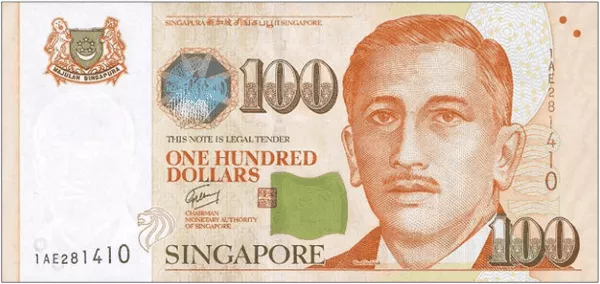Singapore money is the official currency used in Singapore. It is also known as the Singapore dollar (SGD) and is abbreviated as S$. The development of Singapore’s currency system can be traced back to the early 19th century when it was under British colonial rule. Over the years, Singapore has evolved from a small trading port to a modern and prosperous nation with a thriving economy.
In this article, we will explore the history of Singapore’s currency, its design features, and its significance to the economy of Singapore.
The History of Singapore’s Currency
Before Singapore gained independence in 1965, the country’s currency was the Malayan dollar, which was introduced in 1939. However, after gaining independence, the government decided to develop its own currency, and in 1967, the first series of Singapore dollars was issued.
The first series of Singapore dollars featured images of various local landmarks such as the Merlion, a mythical creature that symbolises Singapore. The banknotes were also designed with intricate patterns and colours, making them unique and easily identifiable.
Over the years, Singapore’s currency has undergone several changes to ensure its security and authenticity. In 1999, the third series of Singapore dollars was introduced, featuring advanced security features such as holographic strips and watermarks. These security features have made it difficult for counterfeiters to duplicate Singapore’s currency.
Design Features of Singapore’s Currency
One of the most distinctive features of Singapore’s currency is the portrait of Yusof Ishak, Singapore’s first president, which appears on the front of all banknotes. The reverse side of each note features different themes and designs, such as the country’s skyline or iconic landmarks like the Gardens by the Bay.
In addition to the portraits and images, Singapore’s currency also features braille markings near the edge of each banknote. This feature allows visually impaired individuals to identify the denomination of the note easily.
Another interesting feature of Singapore’s currency is the use of polymer materials instead of traditional paper. Polymer banknotes are more durable and resistant to wear and tear, making them ideal for frequent use.
The Significance of Singapore’s Currency to the Economy
The Singapore dollar plays a vital role in the economy of Singapore. As an export-driven economy, Singapore relies on its currency to maintain its competitiveness in the global market. A strong currency allows Singapore to purchase goods from other countries at lower prices, which in turn helps to keep the cost of living low for its citizens.
The Monetary Authority of Singapore (MAS) is responsible for managing Singapore’s currency and ensuring price stability in the country. One of the ways MAS achieves this is by regulating the supply of money in circulation. When there is too much money in circulation, it can lead to inflation, which erodes the value of the currency. On the other hand, when there is a shortage of money, it can lead to deflation, which can negatively impact the economy.
Another way MAS manages the currency is through exchange rate policies. Singapore operates a managed float exchange rate system, which means that the value of the Singapore dollar is allowed to fluctuate within a specified band against a basket of currencies. This system allows Singapore to maintain a competitive exchange rate while also ensuring that the currency remains stable.
What rank is Singapore in money?
In terms of gross domestic product (GDP) per capita, a common measure of economic output and standard of living, Singapore consistently ranks among the highest in the world. According to data from the International Monetary Fund (IMF), Singapore had a GDP per capita of $65,233 in 2020, which ranked it fourth globally.
Additionally, according to the Global Wealth Report 2021 by Credit Suisse, Singapore has the highest median wealth per adult ($226,105) among all countries surveyed. So in terms of overall wealth and economic development, Singapore is considered one of the wealthiest and most prosperous countries in the world.
Conclusion
In conclusion, Singapore’s currency is an integral part of its economy and identity. The country has come a long way since its early days as a trading port, and its currency reflects its progress and development. From the intricate designs to the advanced security features, Singapore’s currency is a symbol of the country’s resilience and innovation.
As Singapore continues to grow and expand its global presence, its currency will undoubtedly play a crucial role in maintaining its position as a leading financial hub in Asia.


